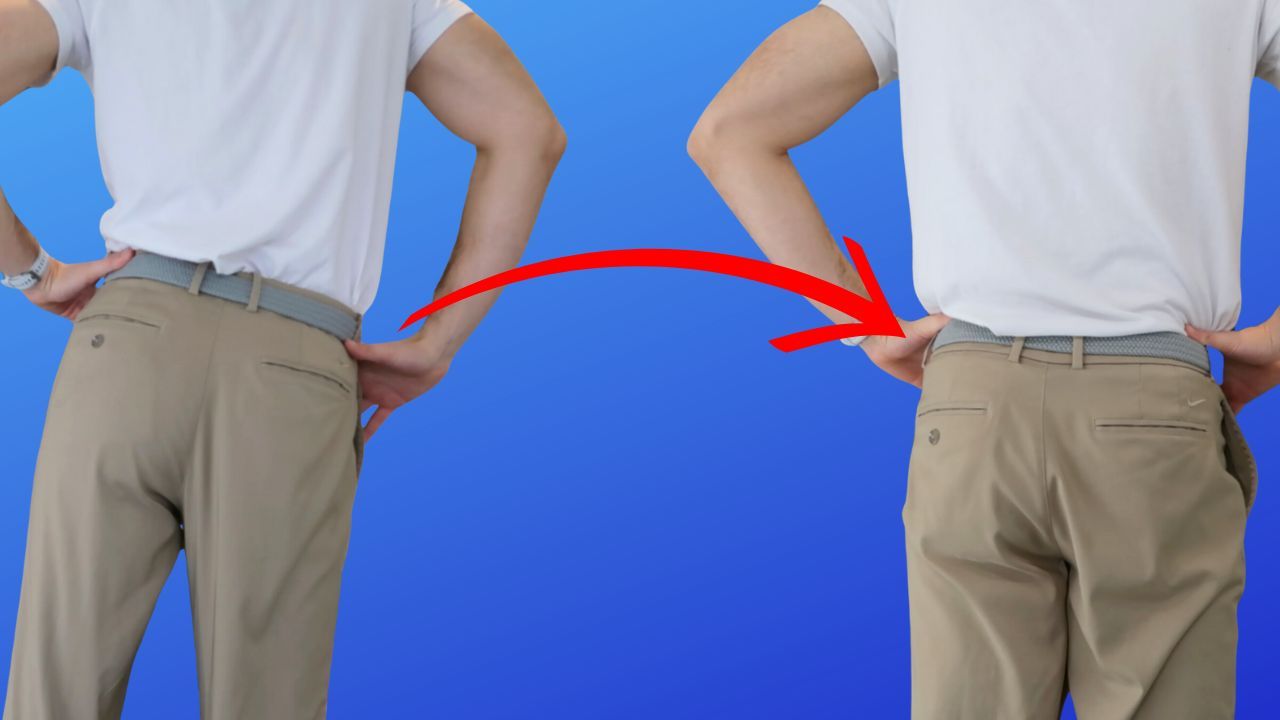Do THIS exercise for healthy pelvis alignment
Dec 26, 2024
Does your pelvis feel like it’s twisted or out of alignment? Maybe you notice your belly button is off-center or things just feel off in your pelvic area.
Is a twisted pelvis responsible for your achy back or hip?
I came to this conclusion years ago too, dear hipster. I did some postural assessments and noticed that my pelvis chronically twisted toward one side.

I did corrective exercises for years to “fix” this problem. Things felt better for a little, until they didn’t.
I eventually realized that trying to change my posture through exercise is a misguided approach. You don’t need to fix the position of your pelvis to feel better.
Instead, I encourage you to mobilize it through all of its ranges of motion. That’s it! Do this everyday and I promise you that your pelvis will move and feel better than before.
In this article, I’ll explain how to do just that.
Twisted Pelvis Symptoms (or something else?)
When I was gung ho about fixing my pelvis alignment, I was acting under certain assumptions.
The first assumption is one that many of my students share with me as well. It is that a pelvis out of alignment causes symptoms in the hip and the low back.

Chronic pain is incredibly complex. Modern science now shows serious doubt between things that our society historically and universally believed caused joint pain - like arthritis or disc degeneration.
If things like arthritis and bulging discs don’t cause pain, what makes us think a twisted pelvis does? It might but it also might not.
This is why I always recommend students learn how chronic pain works before they invest too much time and energy on corrective exercise to fix some postural defect.
Pain comes from the brain, not a twisted pelvis. Learn how your nervous system sends pain signals into your awareness first, then spend as much time as your heart desires realigning your pelvic position.
The second assumption is that we can change the position of our pelvis through exercise. Studies, like this one, show that there is a large degree of genetic variation in the anatomical position of your pelvis.
In other words, we all naturally have different pelvic positions. Some might have more anterior tilts and others more posterior. Some pelvises might be more twisted to the right and others more to the left.

Your pelvis position might not be something that needs to be fixed. Rather, it could just be a unique posture you were born with.
The last and final assumption is that a healthy pelvis must be in a perfectly symmetrical position. This is false. Nature does not work in perfect symmetry.
There are always some discrepancies between one side and the other. This does not mean that we can’t strive for better alignment in our body. There is no question that the way we move affects our posture.
But like many things in life, perfectionism is not ideal. Good enough is better than perfect. Nobody has a perfectly aligned pelvis.
Once I shifted my focus more to how my pelvis moves rather than it’s static position, things finally started feeling better for me. I explain what this looks like in the below section.
How to keep your pelvis aligned (and moving better)
If I had to pick one movement modality that I think can help anyone it would be joint mobility.
Mobilizing your joints through their ranges of motion daily or a few times a week will increase blood flow, lubrication and promote overall healthy and pain-free movement.
Joint mobility drills also help you understand which joints are stiff and aren’t as easy to move as others. The exercises help you explore and learn while mobilizing.
My favorite mobility exercise for the pelvis is the pelvic clock. In this exercise, you use the floor as feedback to feel every part of your pelvis move.
The pelvis has the capacity to move in every direction on a transverse plane. When you're standing or in a cat/cow position, it is difficult to work the pelvis in these various positions.
When you lay down like this you can explore not only each position but your ability to enter and exit those positions.
You might even notice some cramping because all of those tiny muscles surrounding your hips and pelvis are not used to engaging. This is a good thing!

It means you’re building better movement function in this area. Just take a little rest and get back into it once the cramp calms down.
Closing Thoughts
Will the pelvic clock fix your pelvis alignment? Maybe. But as explained above, this might not matter all that much. What I’ve discovered after years of trial and error is that focusing too much on posture leads to poor results for most people.
Pain is complex. Movement does not have to be but seems to be. We modern western adults have become so disconnected from our bodies that we treat our bodies like machines. If only this piece aligned with that part!
I recommend you let go of some arbitrary standard for perfect pelvic alignment. Instead, focus on the things you can control - like the way your body moves.


